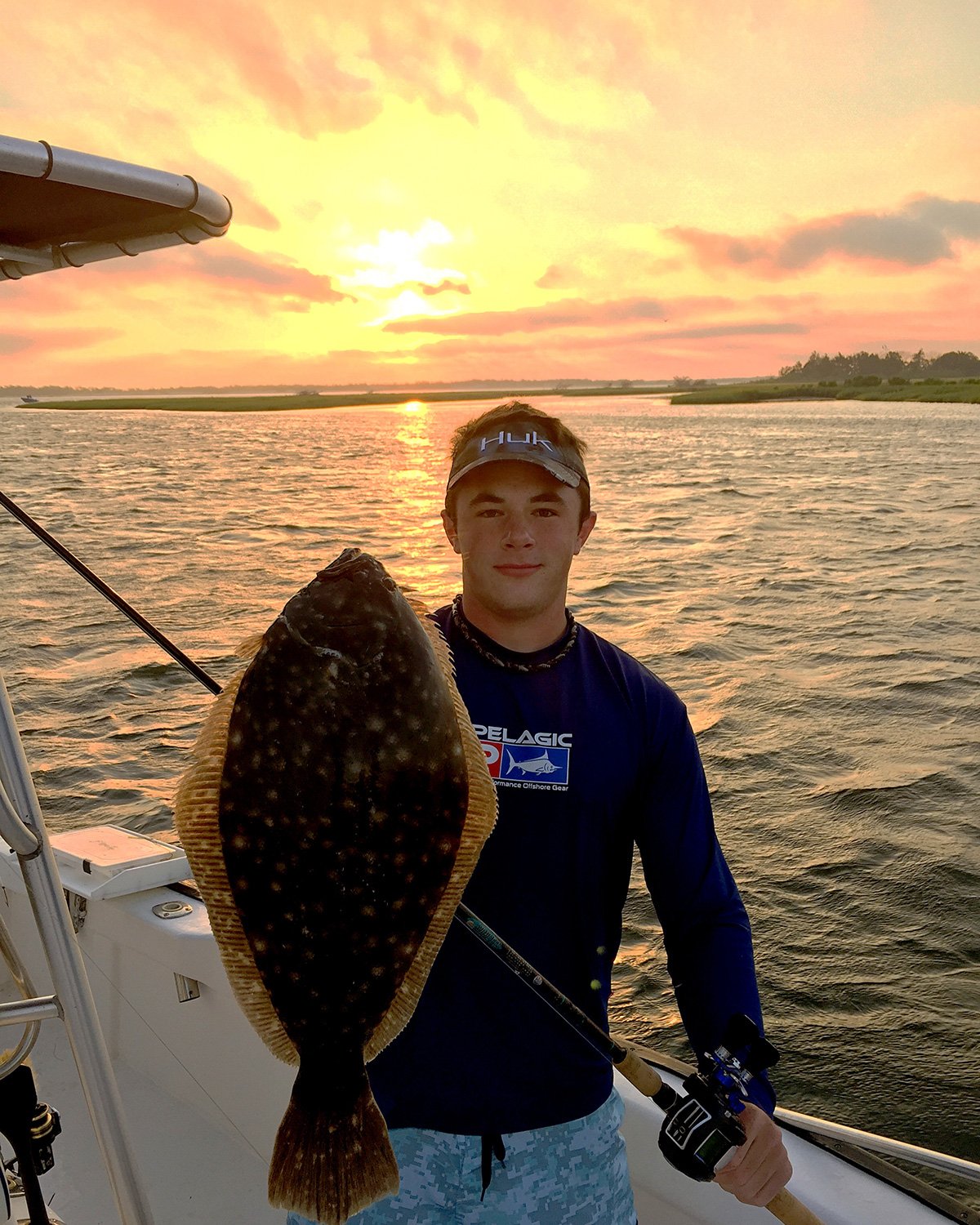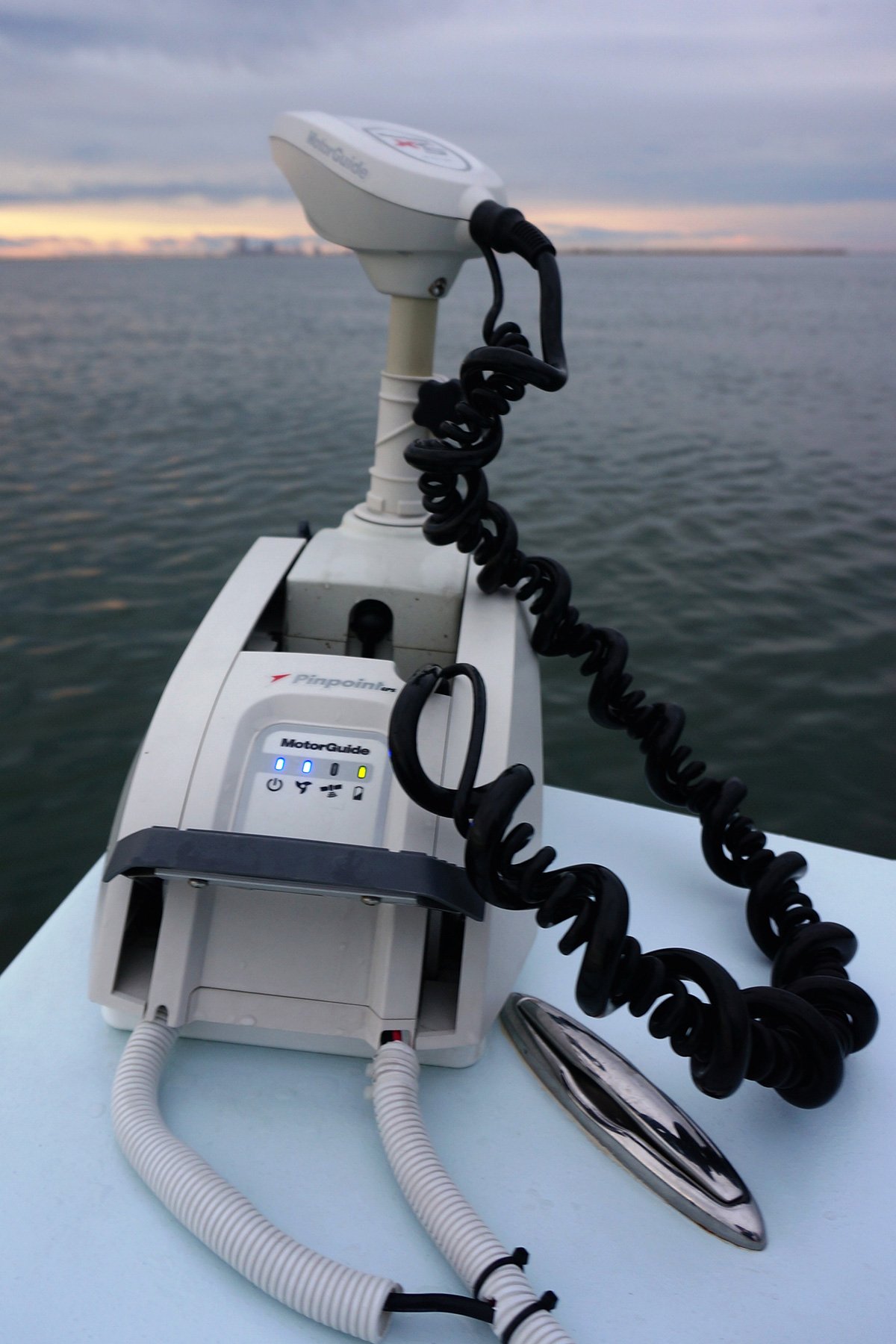
I remember being about 13 or 14 when I was reading local fishing report by the late Lou Rodia. At the time I was working as a glorified bait boy on a Wildwood Party boat, and my family had no boat, so those elusive sod banks on the back bays were out of my reach, regardless of how often I passed them. Yet time and time again those big doormat fluke and tiderunner weakfish were reported caught along the sod bank in late spring and early summer.
Fast forward a few more years than I’d like to admit, and the sod banks now play the pivotal role in my day to day business. Three years back now, I started a backbay fishing company in Wildwood. I have had the advantage of spending often seven days a week on the grass now, where once I was lucky to fish five or six days in the whole summer flounder season!
With my hours racking up, I have gone through some trial and error to fine tune my techniques, and having learned a healthy dose of humility, I’ve also been willing to listen to criticism and ask other fishermen questions of how to make the situation more fishable.
I’ve come to learn that there are really four key points of boat handling that you need to take into account for a successful trip along the sod banks – tide, wind, depth and structure (both shore contours, and bottom types). These days I find myself fishing with charters along the banks in a larger boat, a 40- by 10-foot Maurell Custom Pontoon boat with a 90-horsepower Honda, but these points can easily be applied to whatever rig you may be working.
Moving Water
Any angler or boatman worth his salt knows what the tide is doing and how long he has until it changes. There are apps, publications, and word of mouth advice that can be referenced, but knowing the tide’s direction in relation to the sod bank you are fishing is the key. This is important to know because you can use the tide to pull you across the face of a sod bank to cover more ground in your drift.
As an example, I will use my home waters in Wildwood where we have an inlet in the north and south. The tides split (move in opposite directions) in the waters behind West Wildwood, roughly around the old train bridge; I know that on a flood tide, the waters north of the bridge are moving south from Hereford Inlet, and south of the bridge it is moving north from Cold Spring Inlet down by Cape May. The north side always floods or ebbs first, with about a 10- to 20-minute difference depending on where I am; naturally on the ebb, the directions are reversed. With that knowledge I know where to position my boat in such a way that my customers get the longest drift possible across the bank I am fishing.
Tide is easy to predict and follow; it’s the wind that becomes the tricky part. For the most part, and to some contention (without debating between onshore and offshore breezes) an easterly is our prevailing wind in the summer time. Wind always pushes you from its direction, and unless you have a perfectly symmetrical boat (no one does, shy of an inner tube) then you will crab a little in the direction you set. This is where a small trolling motor helps most folks fishing the back in a center console, skiff or walk-around. For my rig on the other hand, a trolling motor is too small, but I have no problem power drifting my 90-horsepower at clutch ahead to get the same desired result.
Typically I fish on the side of a channel along a bank where I can put my bow into the wind. Inevitably you will be fighting the fetch of the wind as you drift, so putting my motor in clutch and pumping occasionally keeps a tidal drift fairly straight. As an example, if I have an easterly wind, I fish on the west side of an example, if I have an easterly wind, I fish on the west side of a sod bank, keeping the bow close with the engine or trolling motor, and allow the tide to drift me. On days where wind is not an issue, I rely strictly on the tide. If the tide is ripping, I fish down tide of my goal, and motor slowly in a power drift into the steam of the tide, keeping my drift speed to a slow half-knot or so.

Sloping Contours
A common feature of most fishable sod banks is a steep and defined drop-off from 0 to 15 to 20 feet immediately, with fish holding on the drop. Some are more gradual, while others may drop to even 30 feet. Some sod banks are strips of mud and grass; some are full sized islands; and still others are features of the marsh or mainland. These drop-off banks are drop downs with a generally even depth beyond and offshore of it, and that depth usually remains constant a considerable distance away. Fishing these banks on a drift is actually quite similar to fishing the side of a wreck or rockpile offshore, as it is all structure. You put your bait on the structure, and as it moves off it attracts the predators holding in the area, namely the coveted summer flounder.
There are exceptions to the rule obviously, with some banks being a bit more gradual; but it’s the steeper drops that hold the large amounts of fish. Steep does not always mean deep either, as I have had just as good of a flounder bite in 5 feet of water as I have in deeper spots. The key is to know your depths. As most sod banks are mud, they are prone to erosion and shifting, and from season to season these contours can change, so it does take a bit of observation while you fish to learn what has or hasn’t changed.
One other feature of sod banks worth noting is the possibility for small creeks or runs to break them up. I can’t stress enough to fish these areas, particularly on an ebb tide, as the mouths are often lined with hungry monsters waiting for the tide to flush out fresh bait. You also want to take note that there could be small outcroppings on some sod banks like a point or a small mesa feature that may be covered completely at high tide. These are highly sought after features to fish that you are only going to find by exploring.
Remember one old anecdote I like to pass on: if you haven’t run aground, you aren’t fishing in the back bays. You learn by exploring, and sometimes you learn how close you really can get to the sod bank the hard way.
Bouncing Bottom
Last summer I experimented using a GoPro style camera on a homemade rig, and to my surprise I was able to confirm a suspicion; most of our back bays behind Wildwood are not muddy bottom, but sandy. The mud holds close to the banks, and you can feel sinkers being sticky on the end of your line, but just past the bank the sand takes over, and with mixed shells (not much of a shock) and even rocks.
I generally fish with slightly heavier sinkers on my boat, so customers easily find the bottom, so knowing that the different gradients – even the presence of rocks – can help to improve their knowledge on any drift of the difference between a bite as opposed to a sinker grabbing sand or getting sucked into mud. I am often mesmerized by the bottom, and what you can see on it. Just as remarkable is the ability to actually see a sod bank wall, and all the bait, crabs, shrimp and other tasty grub sitting at its base. It’s no wonder the big fish hide there.
As for bait and jigs, I have not come across a combination of bait, plastics, bucktails, jigs, or drop-looped leaders that fails to produce a nice flattie on a sod bank. Obviously some are better than others, but it all comes to the accuracy and experience of the angler. Some men swear by the bucktails tipped with the most tasty and trendy color of Gulp!, whereas more than one old salt will drop a single wide gap hook with a live minnow and catch just as many. Truly it is an angler’s choice, but remember to keep the jig going. A moving bait looks natural in the water. There are plenty of underwater videos out there to prove it.
One final note: spot burning. I fish a large, orange pontoon boat, so my secret spots are not well-hidden. The difference is my success in learning what those little spots are, and how to accurately fish them. A bank or mouth in a sod bank may not yield a fish that first drift, but often it may just be bad luck, improper presentation, or a slightly marginal factor where you may have drifted or anchored 2 feet over too far. It is that persistence that will yield you the best results.
When you find that perfect key, be willing to share your knowledge, but conservative enough to know someone may try to use it on your spot.



